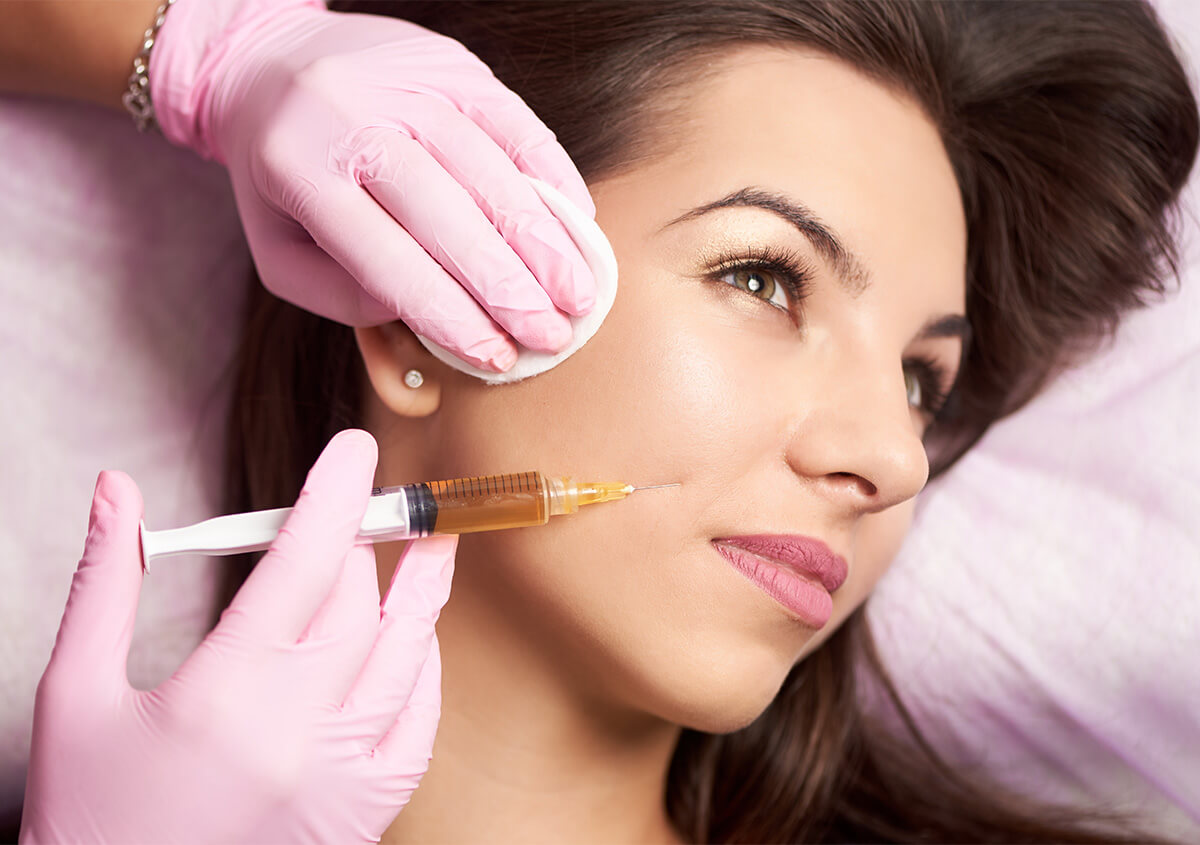
31
Jul
BOTOX® Injections Guilford, CT

While age provides us with wisdom, it also brings wrinkles, folds, and other unwelcome issues. When addressing these signs of aging, Botox is by far the most popular treatment. At his facial rejuvenation practice in New Haven, Dr. Steinbacher has vast experience with Botox and how it can help you regain a more youthful appearance.
What Is Botox?
Botox is derived from a bacterial toxin. It was found that in very small amounts, the bacterium has the ability to cause temporary muscle weakness, particularly in the facial muscles that cause wrinkles and creases. Originally, it was used to treat “lazy eye” in children. After many years of safe use, it was approved for cosmetic purposes.
How Does Botox Work?
Like facial fillers such as Restylane and Juvederm, tiny amounts of Botox are injected into the affected areas. But instead of filling the wrinkles, the Botox relaxes the muscles whose contractions create the wrinkles. Botox is delivered through a tiny needle and softens the following:
- Wrinkles
- Forehead lines
- Frown lines
- Crow’s feet
It is a quick procedure, and patients can immediately return to their usual activities afterwards.
What is the difference between Botox injections and other dermal fillers?
The difference between Botox and dermal fillers is significant. Botox is not classified as a dermal filler. It is a neuromodulator. Neuromodulators are products that smooth lines and creases that are caused specifically by muscle movements. For example, frown lines develop because we frown when we go into the sunshine or we squint looking at a computer screen. Over time, the muscles that are involved in facial movements such as these become toned and tight. This results in lines and creases. To smooth these wrinkles, it is necessary to disrupt muscle contractions, which Botox does.
Botox and dermal fillers are complementary. Botox is often used to reduce lines on the upper part of the face. The lines and creases that form around the nose, mouth, and chin are related not to muscles but to the loss of volume and fatty tissue in the cheeks. Dermal fillers plump tissue with water and other structural chemicals, restoring the volume that is needed for a youthful appearance.
How to Prepare for Botox Injections
Dr. Steinbacher will provide you with specific instructions on how to prepare for your Botox appointment. During your initial consultation with him, it is important to let him know of any botulinum toxin injections you have had in the past four months. Blood thinning medications, sleeping aids, muscle relaxants, or allergy medications may have to be avoided for a period of time before your procedure, as they can increase your risk for bruising or bleeding during treatment.
How are Botox Injections Performed?
A Botox procedure typically takes less than twenty minutes. Using a fine needle, the Botox is injected into the affected muscles in the face with minor discomfort. A numbing cream is placed on the skin prior to the injections.
How Long Does a Botox Injection Last?
The effects of Botox last, on average, four months. The muscles then begin to contract again, causing the reappearance of wrinkles. However, after every session those wrinkles that do reappear are usually less severe because the treated muscles have become “trained” to relax.
Is there a recovery process after Botox?
There is no need to schedule time off work to get Botox. Many patients go right back to their normal activities after getting injections. However, if you have never had Botox, you may want to schedule your treatment after work to observe how you feel. Most patients do not develop significant side effects from Botox. Side effects are typically limited to mild soreness, if any, redness, itching at injection sites, and swelling. Some people also feel slightly fatigued or develop a headache. These systemic side effects are not an indication of an adverse reaction and are expected to subside over the course of several hours.
How often can I get Botox Injections?
The results of Botox can last from 3 to 6 months. Patients are advised to schedule treatments at intervals no closer than 3 months to maintain appreciable results. Some studies suggest that, with ongoing injections, some patients are able to receive Botox less frequently to achieve the desired duration of wrinkle-smoothing effects.
How long after I get Botox injections can I return to work?
It is possible to return to work immediately after receiving Botox treatment. You may experience mild redness, swelling, and bruising. These common side effects diminish quickly and can be disguised with makeup. Additional side effects that are possible but much less common include a minor headache or achy feeling much like the flu. These are also short-lived.
Botox Injection Side Effects and Risks
Botox injections can result in temporary bruising. Although rare, headaches can occur after one to two days, as well, yet don’t continue for long. Dr. Steinbacher advises his patients to avoid rubbing the treatment site for about 12 hours following Botox injections to decrease bruising and enhance the effectiveness of the treatment.
Are Botox injections painful?
Patient comfort is just as much a priority as achieving beautiful, natural-looking results using injectables like Botox. If you are concerned about discomfort, discuss the potential use of a local numbing cream that can be applied to your skin before treatment. Keep in mind that numbing cream must stay on the skin for approximately 30 minutes to reach potency. Botox injections are administered with a tiny needle that incurs a very small pinching sensation. Most patients who receive Botox and other injectables can easily tolerate treatment without local anesthetic.
Schedule a Consultation
If you are interested in learning more about Botox injections, contact our office at (203) 453-6635 to schedule a consultation.

Dr. Derek Steinbacher has devoted his life to aesthetic and life-changing surgery. He is an artistic and meticulous surgeon who draws patients from around the world due to his perspective, unmatched skill, and exceptional results. He is able to uniquely address the face (facelift + rejuvenation), jawline (orthognathic; chin; contouring; implants), nasal (rhinoplasty), eyelids, profile, neck, breast, and body with one-of-a-kind results.
He is a multiple Board-Certified, Fellowship-Trained Plastic, Cosmetic, and Cranio-Maxillofacial Surgeon. He is Fellow of the most prestigious surgical organizations, including the Society of Plastic Surgeons, the American College of Surgeons, the Royal College of Surgeons of Edinburgh, the Academy of Facial Plastic Surgery, Societies of Craniofacial and Maxillofacial Surgery, the Aesthetic Society, and the Rhinoplasty Society. He has served as Full-Professor of Plastic Surgery at Yale, including Director of the Cleft and Craniofacial Program, and Chief of Oral and Maxillofacial Surgery. Dr. Steinbacher has unparalleled training at premier institutions, including Harvard and Johns Hopkins. His perspective brings together the best aspects of many distinct – but related fields – and it is this intersection of scope and expertise, in addition to an artistic eye, which enables excellent comprehensive results.
Dr. Steinbacher's approach: technical acumen, meticulousness, and penchant for combining art and science, together with his eye for balance, beauty, and harmony, helps achieve outcomes that greatly improve a person's confidence, health, and overall quality of life. Patients can trust that they are always in good hands!

